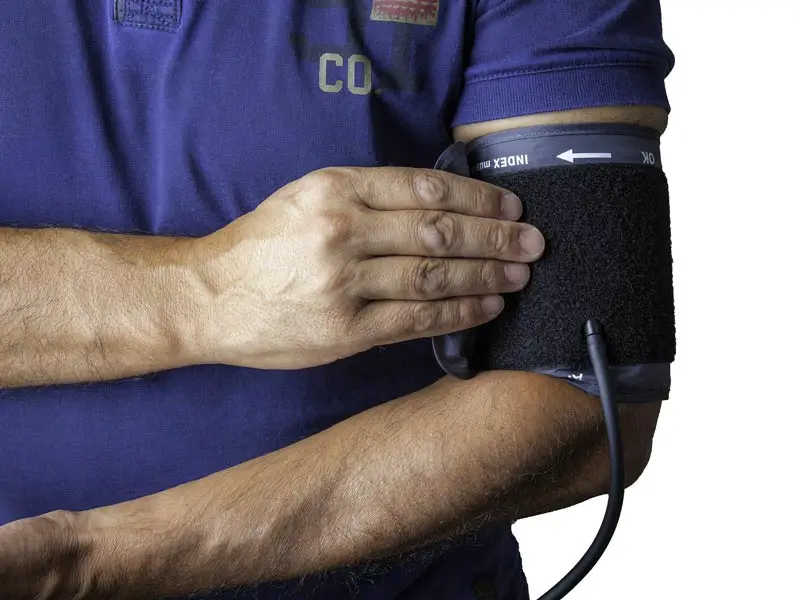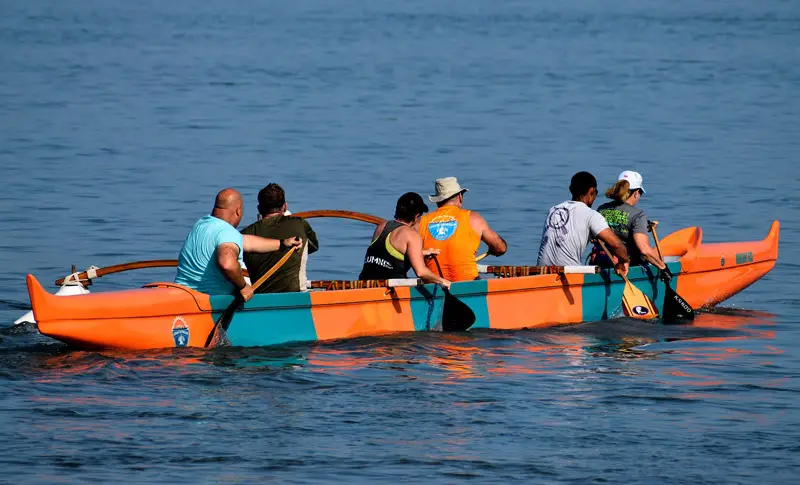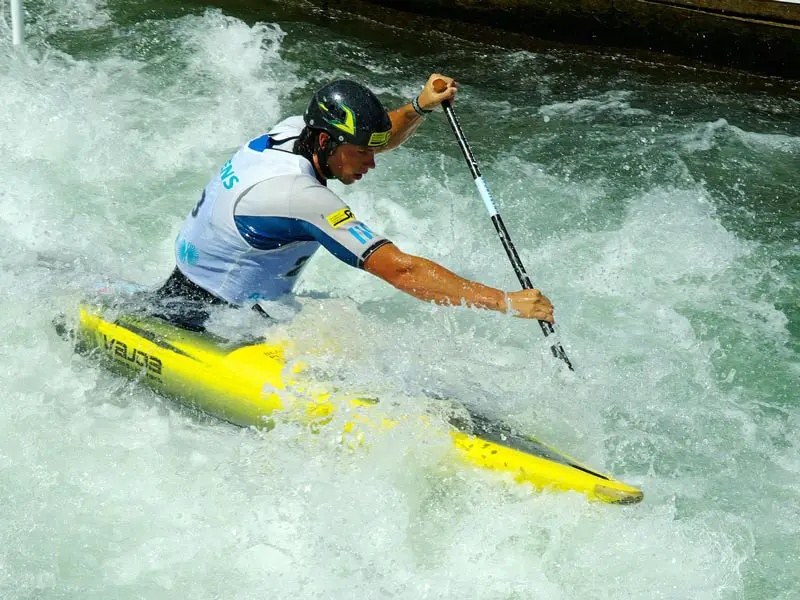Hitting the gym every day, week after week, doing the same thing over again can end up lowering your motivation to work out over time. In this case, doing some sports activity outdoors can be a solution to this problem, and canoeing is one of the most popular today. But there are many people wondering Is canoeing good exercise?
Does Canoeing Build Muscle and Does Canoeing Burn Calories?
And the quick answer is yes, canoeing is an excellent physical activity in all senses, which in addition to improving your cardiovascular health, can also help you develop muscle mass, and burn calories among many other benefits.
Today, I’m going to show you the benefits that regular canoeing can add to your general fitness regimen.
Is It Canoeing or Kayaking?
Before getting started, it’s important to emphasize that although many people use the terms canoeing and kayaking as if they were synonymous, each activity has its peculiarities, and these are mainly related to the equipment and technique that’s used.
As a general rule, in kayaking, we sit inside an enclosed vessel with legs extended forward, and use a double-bladed paddle, while in traditional canoeing, we kneel or sit inside an open type vessel and use a single-bladed paddle.

However, the reality is that nowadays, the equipment is usually adapted according to the needs of the user and the environment, so we can see combinations between the different equipment and techniques. It is for example possible to use a single-bladed paddle in a kayak and a double-bladed paddle in a canoe. In this way, we can say that both canoeing and kayaking are modalities of the same discipline and their health benefits are very similar.
But today we are specifically talking about canoeing, so let’s see what these benefits are.
9 Canoeing Health Benefits
1. Canoeing Strengthens Your Cardiovascular System
Canoeing is an excellent aerobic activity to improve your overall cardiovascular health, reducing the risk of heart disease, diabetes, stroke, and Alzheimer’s disease.
Each continuous movement of the paddle raises the heart rate steadily, making the heart and lungs stronger and more efficient at their work. Even after reaching a certain level, if you want to increase the benefits, you just have to increase the intensity.

2. Canoeing Burns a Lot of Calories
Canoeing is an energy intensive exercise and burns a surprising amount of calories. Done regularly, canoing can help you lose weight.
In fact, paddling a canoe at an average speed of 4-6 mph burns up to 735 calories per hour for a paddler weighing 175lb. That means that in a 2-hour paddle, you’ll burn nearly 1500 calories. Compare that to the 210 – 360 calories burned walking and you can see how canoeing can be used to help lose weight.
3. Canoeing Strengthens Many of Your Muscles
When you paddle, you’re naturally exercising all of your core muscles, including the muscles of your back, chest, shoulders, and arms with each stroke, which greatly increases your strength due to the resistance of the water.
What is less obvious is that you also exercise your abdominal muscles to help maintain the boat stability, and when twisting to increase your stroke’s overall power, as well as constantly applying pressure with your legs against the inside of the boat.
This continuous contraction in your legs is an excellent isometric exercise that increases their strength and keeps them toned.
4. Regular Paddling Will Increase Your Stamina Levels
Stamina is related to the body’s ability to work and stay active for longer periods of time; in other words, your body’s ability to resist and recover faster from fatigue.
This factor improves significantly with regular canoeing, which will allow you to exercise for longer. So the more often you go canoeing, the longer you will be able to paddle for, and the less tired you will feel.
5. It Reduces Stress and Gives You Emotional Balance
Everyone knows that being out in nature is relaxing and can help bust stress, but did you know that people naturally find being around water to be calming? This is one of the reasons most people seek out beaches and lakes for vacations, it’s in our instincts.
Exercise also naturally makes us feel happy, due to the release of endorphins. Many people find that canoeing offers them a kind of meditative state, due to the effect of the water and nature, and the repetitive motion of paddling.

6. Canoeing Can Improve Your Self-Confidence
Generally speaking, playing sports allows people to improve their self-image.
Looking and feeling better every time, setting then breaking personal records, giving the best of yourself in sporting events and overcoming challenges such as wild waters or crossing the open sea, will help you build confidence in yourself and improve your self-esteem.
7. It Gives You Vitamin D
Vitamin D has many positive effects on the body, including a vital role in absorbing calcium and boosting the immune system. However, it can be difficult to get enough only from food. Although you can always get it from supplements, it’s much better to get it from the sun.
It’s not surprising that a large percentage of people who spend most of their time locked in offices are vitamin D deficient due to lack of sun, so an outdoor activity such as canoeing will be very helpful in this sense.
8. Canoeing is a Great Opportunity to Socialize
Most canoes are built for two or more paddlers, therefore requiring teamwork and good communication skills to get your craft heading in the right direction. This naturally allows people to enjoy more social interaction and problem-solving, which of course is very beneficial for mental health.
Canoeing is also a fairly accessible activity, with the vast majority of the American population living near canoeable water. You don’t have to be a professional athlete to take up canoeing, all you need is a canoe, paddles, and a life jacket.

It is this accessibility, as well as being a very enjoyable recreational activity that is making more and more people practice it in groups, whether on excursions, events, or other similar activities.
9. It Is a Low Impact Sport
For some people, pounding the pavement every day can do more harm than good. In fact, many sports can pose a danger of damaging your joints either through shock or repetitive use.
The type of physical activity that canoeing represents poses a lower risk of injury to your joints than running or jogging because it’s a low-impact activity. The type of movement you do when paddling is natural for your joints, which helps keep them lubricated and working well.
Does Canoeing Build Muscle?
Yes, canoeing does build muscle. Bear in mind that the action of paddling involves a constant muscular effort against the resistance that water offers and this is especially true when paddling against a strong current or using a larger bladed paddle. When canoeing, all the large muscle groups in your body are activated, which is ideal for the development of muscle mass due to the higher energy consumption that it requires.

With each stroke, the dorsal muscles in your back are activated due to the pulling back movement of the arms. This involves an intense back workout that also hits the deltoid muscles of the shoulders, especially in the back — the impact here is greater than in a typical back workout.
Also, the work of the arms is key here, especially from biceps and triceps. When one of the arms is paddling, the biceps of that arm is activated by contracting, while the other arm counteracts the movement with a forward extension, activating the triceps. This constant movement of the arms also engages the pectoral muscles, and the effect is similar to that of a dumbbell bench press.
Simultaneously, your abdominal and oblique muscles will come into play as actors in the overall performance. Your core muscles, from the waist to the neck, must constantly work through rotational movements, which also has enormous benefits in stabilizing the spine. The tibialis, gastrocnemius, soleus, and biceps femoris muscles are also activated at the beginning of each paddling cycle to generate additional power and stabilize the back.
Subsequently, the rest of the lower muscles such as the quadriceps and gluteus maximus come into play to achieve the maximum extension of the paddling movement — it varies according to the form of paddle — before returning to the starting position to start a new cycle.
Use Correct Paddling Form To Engage Your Muscles Properly
Stabilize Your Back
When paddling try to always keep your back as straight as possible. Just like when you are lifting something heavy, a bent back can risk injury when canoeing, so don’t be a hunchback. Keeping your back straight also ensures greater general stability within the boat correctly engages the muscles in your core and posterior chain.
Hold Your Paddle Correctly
When using a single-bladed canoe paddle, holding it with the correct grip will ensure the most efficient paddle strokes. Trying to hold a canoe paddle like a double-bladed kayak paddle will result in slow progress and sore arms.
With one hand you should hold the paddle at the top on the grip, this hand is the control hand and is on the canoe side. With your other hand, roughly shoulder-width apart, or whatever feels most comfortable, you should hold the shaft. This end is the one that enters the water.
Power Using Your Core
While your arms are certainly necessary and fully involved in the paddling process, trying to paddle only using your arms you will quickly find them getting tired and sore. Your core muscles are much stronger than your arms since they are constantly in use every day preventing your body from folding in half.
When starting your paddle stroke try to place the paddle in the water as far forward as possible without getting up from your seat. Then, with your outboard arm holding the paddle steady, use your core to rotate your body and pull the paddle towards yourself. This is the time when you should exert the most force since the resistance of the water comes into play here.
As you pull the paddle towards yourself using your upper body and arm muscles you will also notice the role of the leg muscles to increase stability and overall strength of the movement. When the paddle reaches your hips, it’s time to momentarily relax your muscles, lift the paddle out of the water and start another paddle stroke.
Additional Tips
Remember that if you’re using a single-bladed paddle, you’ll have to change hands every certain number of strokes, otherwise you will be only working one side of your body.
If you are paddling with a partner, you will need to communicate when you are switching sides, otherwise you may end up going round in circles.
Conclusion: Is Canoeing Good Exercise
Without a doubt canoeing is good exercise. From burning calories, building muscle and giving your mental health a boost, canoeing may just be the sport you are looking for to add to your exercise regimen.
However, before jumping straight into canoeing make sure you are aware of any potential dangers. Check out our article on How To Stay Safe Canoeing.
You may also be interested in: What Muscles Does Paddle Boarding Work?

